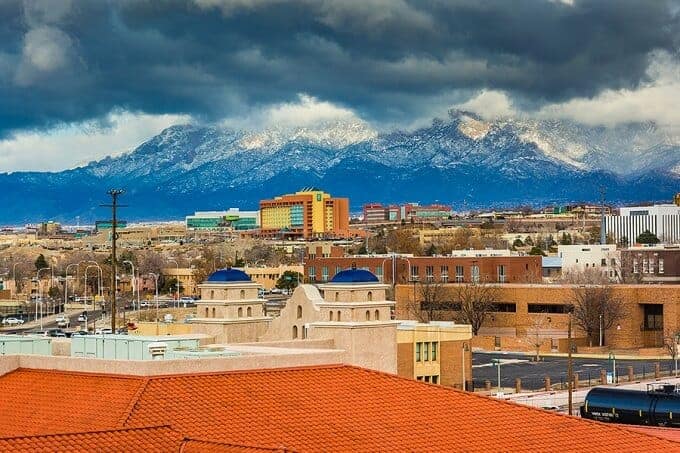Diverse immigrant populations do more than enrich a city’s cultural fabric. According to geographers from UB and Southampton University, they also boost wages.
“What we found was remarkable. In cities that are unwelcoming to immigrants, as diversity rises, people’s wages either don’t change, or they go up by only a small amount. In cities that are welcoming to immigrants, as diversity goes up, people’s wages go up, and by a lot,” says Abigail Cooke, assistant professor of geography in UB’s College of Arts and Sciences, who wrote the paper with Thomas Kemeny, a UB research assistant professor and lecturer at the University of Southampton in England.
“It’s been shown empirically that as you have more immigrants and greater diversity of immigrants in a city, people’s wages also increase, which is certainly not the narrative that is often told about immigrants in our society. But this is a pretty robust finding, especially in the U.S.,” adds Cooke. “The contribution of this new research is that it shows how the institutional character of different cities might facilitate this positive aspect of immigration, or not.”
The findings were published online ahead of print March 30 in the journal Economic Geography.
Their research also found that anti-immigrant policies and laws may actually end up backfiring on the group most likely to support them — workers who were born in the U.S. “That was really surprising to us,” Cooke says.
“U.S.-born workers in these anti-immigrant cities get no benefit from rising diversity. Their wages don’t go down, but unlike everyone else, their wages do not go up as diversity increases,” she explains. “Immigrants in those places still seemed to be able to benefit, despite the fact that they’re in this unwelcoming environment. It was less so than in pro-immigrant places, but they still benefitted.”
Cooke and Kemeny examined reams of U.S. Census Bureau data for 33 million people from across 160 metropolitan areas from 1991 to 2008. States include Arizona, California, Florida, Maryland, New Jersey, Texas, Washington and others. (Data for New York and several other states was not made available through the Longitudinal Employer-Household Dynamics program.)
They looked at the wages of people who stayed with one employer for at least two years and tracked their wages over time as diversity in both their workplace and their city changed.
Cooke and Kemeny suspected the various institutions that make up a city play a key role in shaping what previous studies have shown to be a strong relationship between greater immigrant diversity and higher productivity — in this case, wages.
In economic terms, inclusive institutions refer to societal structures that facilitate trusting interaction among diverse people. Cooke and Kemeny employed two different methods to measure inclusive institutions in the metropolitan areas for which they had data: a composite measure of social capital — the resources and connections that individuals in places have at their disposal to facilitate their lives and provide opportunities to interact with others in the city — and locality-specific ordinances aimed at immigrants.
The researchers focused on metropolitan areas that ranked at the high and low ends of the social capital index. “The wages of workers in cities that feature strongly inclusive institutions, whether measured by social capital or immigrant ordinances, respond much more sharply to changes in immigrant diversity in their urban context,” they write.
With an average increase in immigrant diversity over the study time period, the average worker in a high social capital metro area has enjoyed a 21 percent wage increase. Conversely, wages for workers in metropolitan areas with low social capital rose by only 2.4 percent in response to a similar increase in immigrant diversity.
To measure policies toward immigrants, the researchers aggregated county and city laws recently implemented that target immigrants, either favorably, such as sanctuary laws, or unfavorably, such as those that restrict the use of languages other than English.
Cities with very pro-immigrant ordinances include Madison, Wisconsin; El Paso, Texas; and Albuquerque, New Mexico. Cities that were unfavorable to immigrants were Charlotte, North Carolina; Palm Bay, Florida; and Green Bay, Wisconsin.
The findings using this very different measure of inclusive institutions were remarkably similar to the social capital findings. As immigrant diversity increased, wages rose in pro-immigrant cities but were stagnant in anti-immigrant cities, Cooke says.
However, she cautions, “Our research cannot say that if a city passes pro-immigrant policies, then wages will suddenly increase for native-born workers. But I don’t think the answer is to give up. Places and institutions evolve slowly, but they evolve through effort.”

